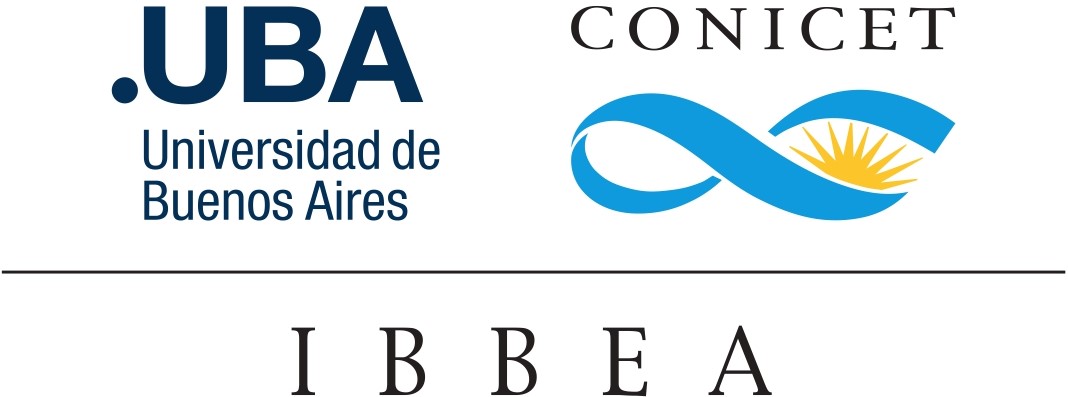Últimos 5 Años
- Ortega-Insaurralde I; Latorre-Estivalis JM; Costa-da-Silva AL; Cano A; Insausti T; Salas Morales H; Pontes G; Berón de Astrada M; Ons S; DeGennaro S; Barrozo RB. 2024. The pharyngeal taste organ of a blood-feeding insect functions in food recognition. BMC Biology, 22:63. https://doi.org/10.1186/s12915‑024‑01861‑w
- Lazzari, C. R., Ortega-Insaurralde, I., Esnault, J., Costa, E., Crespo, J. E., & Barrozo, R. B. 2024. Mosquitoes do not Like Bitter. Journal of Chemical Ecology, 1-9. https://doi.org/10.1007/s10886-024-01476-z
- Manrique, G., Rojas, J. C., Figueiras, A. N. L., Barrozo, R. B., & Guerenstein, P. G. 2023. Highlights, challenges, and perspectives in basic and applied chemical ecology of triatomines. Current Opinion in Insect Science, 59, 101101.
- Ortega-Insaurralde I, Barrozo RB, 2022. The closer the better: Sensory tools and host-association in blood-sucking insects. Journal of Insect Physiology 136, 104346. https://doi.org/10.1016/j.jinsphys.2021.104346
- Barrozo RB, Latorre-Estivalis JM, Ortega Insaurralde I. 2022. Salt perception in disease vectors. Capitulo: 18-489-509. In: Sensory Ecology of Disease Vectors. Eds: Ignel R, Hill S, Lorenzo MG, Lazzari C. Wageningen Academic Publishers.
- Pontes, G., Latorre-Estivalis, J.M., Gutiérrez, M.L., Cano, A., Berón de Astrada, M., Lorenzo, M.G., and Barrozo, R.B. 2022. Molecular and functional basis of high-salt avoidance in a blood-sucking insect. IScience 25, 104502.
- Barrozo RB, Lorenzo MG 2021. Sensory Biology of Triatomines In: Triatominae – The Biology of Chagas Disease Vectors, 197–214. Eds: Guarneri A, Lorenzo MG. doi:10.1007/978-3-030-64548-9_9
- Latorre-estivalis, J.M., Almeida, F.C., Pontes, G., Barrozo, R.B., Lorenzo, M.G., 2021. Evolution of the Insect PPK Gene Family. Genome Biol. Evol. 13, 1–15. doi:10.1093/gbe/evab185
- Pontes, G., Estivalis, J. M. L., Gutierrez, M. L., Cano, A., Berón de Astrada, M., Lorenzo, M. G., and Barrozo, R. B., 2021. Salty surfaces deter feeding in a blood-sucking disease vector. bioRxiv. doi: 2021.03.22.436426
- Ortega-Insaurralde, I., Picollo, M.I., Barrozo, R.B., 2020a. Mouthpart sensory structures of the human head louse Pediculus humanus capitis. Arthropod Struct. Dev. 59. doi:10.1016/j.asd.2020.100996
- Ortega-Insaurralde, I., Picollo, M.I., Barrozo, R.B., 2020b. Sensory features of the human louse antenna: new contributions and comparisons between ecotypes. Med. Vet. Entomol. doi:10.1111/mve.12485
-
Muñoz IJ, Schilman PE, Barrozo RB 2020. Impact of alkaloids in food consumption, metabolism and survival in a blood-sucking insect. Scientific Reports 10:9443, https://doi.org/10.1038/
s41598-020-65932-y - Masagué S, Cano A, Asparch Y, Pontes G, Minoli S, Barrozo RB. 2020. Sensory discrimination between aversive salty and bitter tastes in an haematophagous insect. European Journal of Neuroscience, in press. DOI: 10.1111/ejn.14702.
- Ortega Insaurralde I, Minoli S, Toloza A C, Picollo MI, Barrozo RB. 2019. The sensory machinery of the head louse Pediculus humanus capitis: from the antennae to the brain. Frontiers in Physiology, 34: 55-60.
- Barrozo RB. 2019. Food recognition in hematophagous insects. Current Opinion of Insect Science, 10: 434.
- Fernandez P, Braccini CL, Dávila C; Barrozo RB, Coll Aráoz MV; Cerrillo T, Gershenzon J, Reichelt M, Zavala JA, 2019. The use of leaf surface contact cues during oviposition explains field preferences in the willow sawfly nematus oligospilus. Scientific reports, 9:4946. DOI 10.1038/s41598-019-41318-7, en prensa.
- Minoli S, Cano A, Pontes G, Magallanes A, Roldán N, Barrozo RB. 2018. Learning spatial aversion is sensory specific in the hematophagous Rhodnius prolixus. Frontiers in Psychology, 9: 989. DOI 10.3389/fpsyg.2018.00989.
- Cano A, Pontes G, Sfara V, Anfossi D, Barrozo RB. 2017. Nitric oxide contributes to high-salt perception in a blood-sucking insect model. Scientific Reports, DOI 10.1038/s41598-017-15861-0, en prensa.
- Pontes G, Pereira, MH, Barrozo RB. 2017. Salts control feeding decisions in a blood-sucking insect. Journal of Insect Physiology, 98, 93–100. DOI: 10.1016/j.jinsphys.2016.12.
002. - Barrozo RB, Reisenmann CE, Greenstein P, Lazzari CR, Lorenzo MG. 2017. An inside look at the sensory biology of triatomines. Journal of Insect Physiology, 97:3-19. http://dx.doi.org/10.1016/j.
jinsphys.2016.11.003
